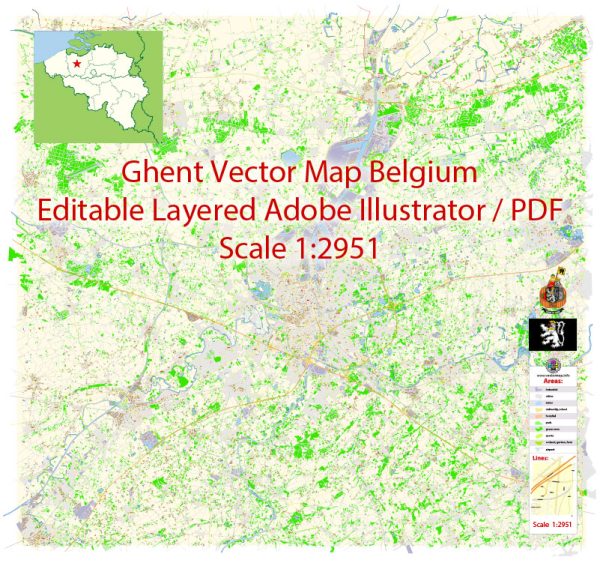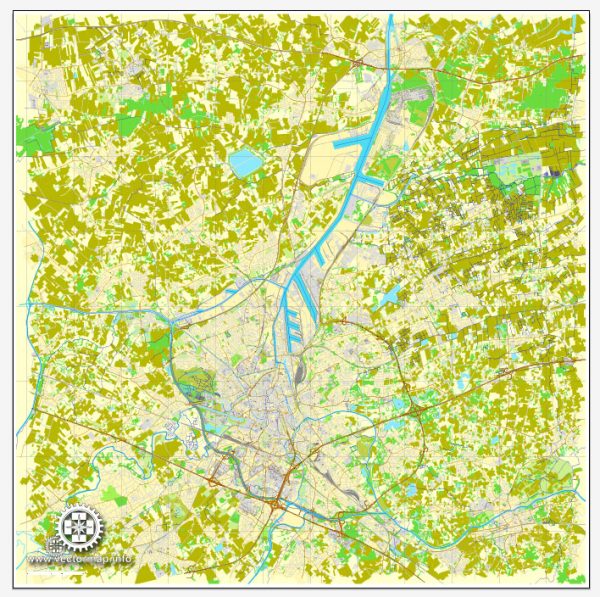Ghent, located in the Flemish region of Belgium, has a rich history of urban development that spans over a thousand years. Here’s a brief overview of the key phases in Ghent’s urban development:
- Medieval Period (9th-15th centuries):
- Foundation: Ghent’s origins can be traced back to the 9th century when it was founded as a small settlement around the confluence of the Rivers Scheldt and Lys.
- Trade and Prosperity: Ghent became a prominent trade center during the Middle Ages, particularly in the 11th and 12th centuries. The city’s wealth grew through the cloth trade and its strategic location on the trade routes.
- Gothic Period (late 13th-16th centuries):
- Architectural Flourish: The Gothic period saw the construction of several notable buildings, including the Belfry of Ghent and St. Bavo’s Cathedral. The city’s skyline was dominated by tall towers and impressive structures.
- Wealth and Influence: Ghent reached its zenith in terms of economic and political power during this period, often competing with other major European cities. However, internal conflicts and external pressures, such as the rise of maritime trade routes, led to a decline.
- Spanish and Austrian Rule (16th-18th centuries):
- Revolt Against Spanish Rule: Ghent played a significant role in the Dutch Revolt against Spanish rule in the 16th century. The city’s resistance was marked by the “Gentse Feesten” and the eventual formation of the Union of Utrecht in 1579.
- Economic Decline: The 17th century brought economic challenges, including the decline of the textile industry and wars. Ghent’s influence waned during this period.
- 19th Century:
- Industrial Revolution: Like many European cities, Ghent experienced industrialization during the 19th century. The textile industry revived, and new industries emerged, transforming the cityscape and leading to the growth of the working class.
- Urban Expansion: Ghent expanded beyond its medieval boundaries, and industrial zones were established. This period also saw the construction of new neighborhoods and the expansion of transportation networks.
- 20th Century:
- World Wars: Ghent, like much of Belgium, was impacted by both World Wars. The city suffered damage, especially during World War I.
- Post-war Reconstruction: After World War II, Ghent underwent reconstruction efforts. Modern infrastructure and residential areas were developed, and efforts were made to preserve the city’s historical heritage.
- Contemporary Period:
- Cultural Revitalization: In recent decades, Ghent has focused on preserving its historical heritage while promoting cultural initiatives. The city has become known for its vibrant arts scene, festivals, and as a hub for education and research.
Ghent’s urban development is characterized by a blend of historical architecture and modern infrastructure, making it a city that reflects its rich past while embracing the challenges and opportunities of the present.



 Author: Kirill Shrayber, Ph.D.
Author: Kirill Shrayber, Ph.D.